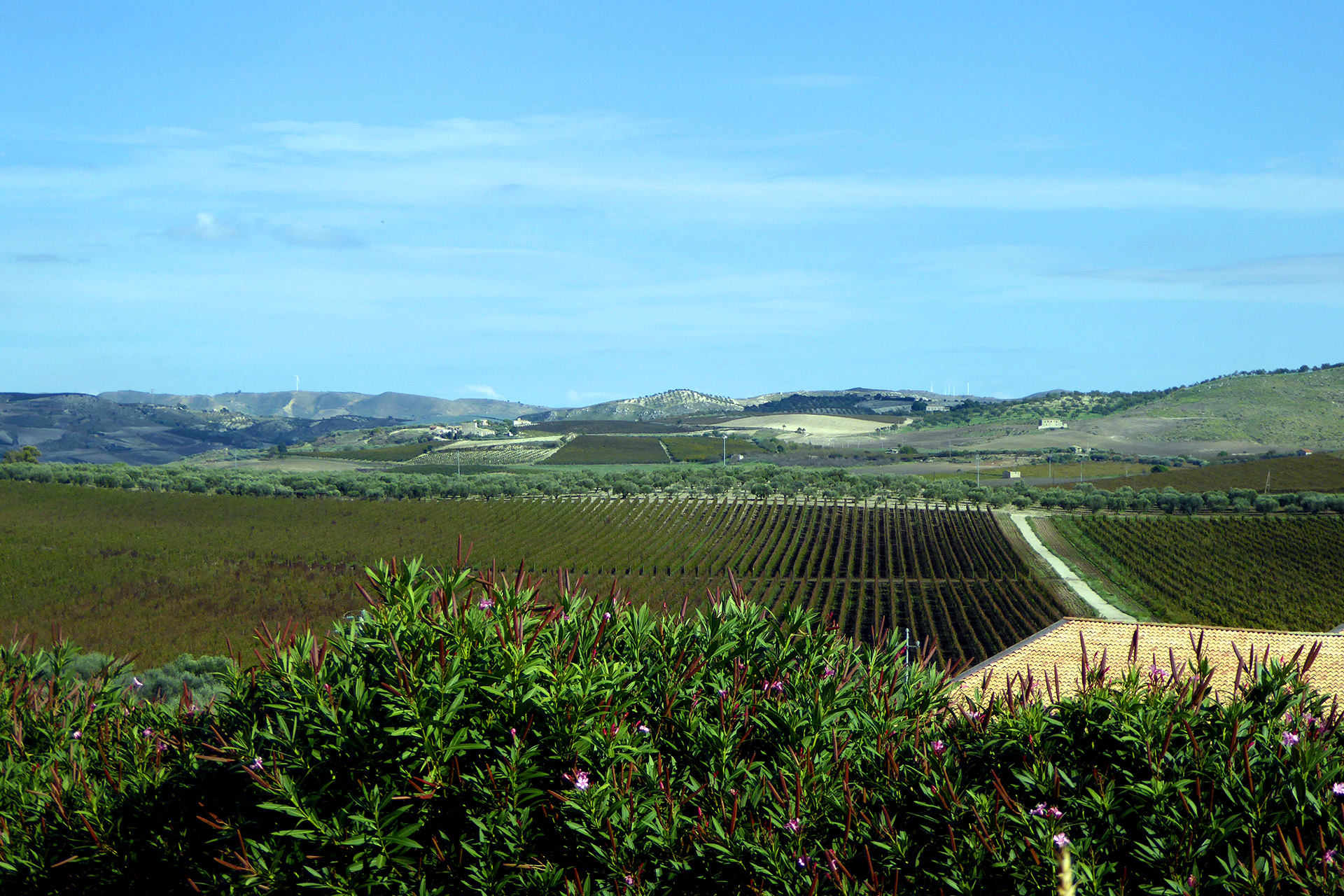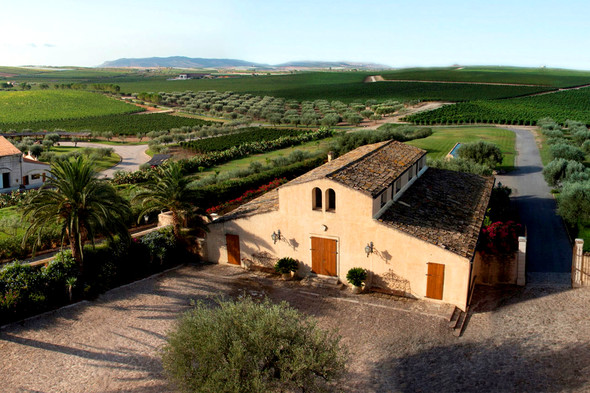You can see the sixteenth century feudo with its tower atop the hill from afar, seemingly a small castle, glowing golden in the afternoon Sicilian sun. Outside a fountain which was originally a granary in Roman times. Inside antique furniture and decorated tiles. The intense golden walls are surrounded by green rolling hills, set against the clear blue of the Sicilian sky. The view from the terrace is stunning. It’s in fact only 8 km from the sea, although it sits at 350 m above sea level with cool evening breezes to counter the baking hot Sicilian sun, which can reach 40°C in the summer. This, along with the protection afforded by nearby Mount Dessueri, provides a fantastic microclimate for quality wine production.
The northern Italian Zonin family recognised this and bought the estate in 1997, so it now forms part of their ten estate ‘empire’. Thanks to them, the winery is a blend of modernism, efficiency and tradition.

Nero d’Avola, symbol of a renewed Sicilian oenological tradition, is the star here in the Gela region. The house and cellar are encircled with vines, pretty much as far as the eye can see – mostly Nero d’Avola, but also Inzolia, Grillo, Carricante, Chardonnay, Cabernet Sauvignon, Petit Verdot and Merlot. The entire property is fenced in to keep out the sheep. Claudio Galosi, the winemaker since 2009 and now director of the estate, stressed the importance of this, as some sheep once got in and within three minutes they had chomped their way through the grapes of three whole rows of vines.
Much of the terroir here is high in shell-rich limestone, thus also rich in calcium, which lends the grapes good acidity, preserving the elegance and fruitiness of the wines as they age. And in Sicily, you can do with this acidity! Claudio reckons their wines can easily age for eight to fifteen years. Of course, they use an appropriate rootstock to avoid chlorosis. Claudio points out, however, that the terroir changes pretty rapidly in Sicily, so there are many plots of land with quite different terroir over the 350 hectares of vines.
Down in the cellar, there are no barriques to be seen, they work only with large ‘botti’ of either 300 or 600 litres or ‘tonni’ of 350 litres. You can also see the emblem of Branciforte, the first prince of Sicily, emblazoned on the wall. This depicts a lion with his hand cut off, which was to protect the king. This ‘feudo’ was the summer residence of Ambroglio Branciforte, Principe di Butera. The Branciforte family was one of the most powerful dynasties in Sicily, owning 10% of the entire island’s income by the beginning of the eighteenth century. Claudio explained the difference between a ‘baglio’ and a ‘feudo’ – the former is a fortified manor house close to the sea, whereas the other is further inland. The name Butera apparently comes from Re Bute, the first king of the Siculi, so land, and wines, with a truly noble heritage.






